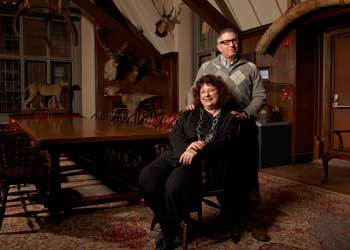
May 9–August 3, 2012
Curator's Statement

It is no coincidence that Mark Dion’s Phantoms of the Clark Expedition is located at The Explorers Club, in a building that began its life as the home of the extraordinary art collector Stephen Clark. Today, it also houses the New York office of the Sterling and Francine Clark Art Institute, founded by Stephen’s equally extraordinary brother, Sterling Clark.
Dion’s intervention in the Club’s fifth-floor Trophy Room considers this site as a repository for overlapping stories with unexpected connections between the life of Sterling Clark, the mission of the Club, and the closing years of the Age of Exploration. Though best known today as an art collector, Sterling Clark also mounted a complex scientific expedition in 1908–9 to document a remote region of northern China. Dion’s project asks, “Who was Sterling Clark?” and “What is the connection between young Clark, the explorer, and the later Clark, the art collector?”
Dion chose papier-mâché as the primary material for his installation because it had been used by scientists and early museum exhibition-makers to create models for their discoveries as well as for the first dioramas found in natural history displays. Dion’s sculptures represent the typical objects that Clark would have had on hand for an expedition at this time. Seen alongside the stuffed hunting trophies collected by early Club members, Dion’s stark white “phantoms” are, like the trophies, surrogates for the many expeditions organized by scientific adventurers of Clark’s generation—renowned and forgotten. They are intended, in the artist’s words, to evoke, “the sun-bleached bones of these expeditions past.”
From Dion’s vantage point, the leap from collecting specimens and data to acquiring Old Master and Impressionist pictures is not as great as it might seem. What Clark the scientific explorer had in common with Clark the art connoisseur is that collecting lies at the center of both identities. Clark’s pursuit of rare aesthetic treasures became the next frontier for his explorations.
—Lisa Corrin
